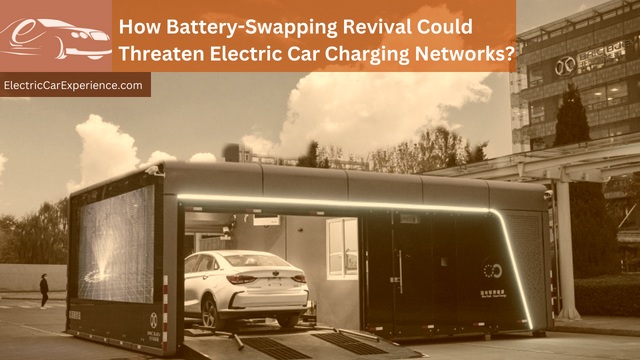
Background Image: Korea Herald
With some bad history, Battery Swapping technology for electric vehicles is now reviving. Battery-Swapping is just a matter of some seconds now. China’s companies such as NIO, CATL, Aulton, Yadea, and Geely are in the market for Battery-Swapping. While Europe doesn’t look like taking any efforts into the Battery Swapping technology, but moreover focused on the battery charging networks for electric vehicles.
Top 6 reasons for battery swapping are considered threats to electric car charging networks.
- Increasing Popularity
- Giant entry in field
- Deals and arguments
- Sussesful trial
- Cost efficiency
- Customer Satisfaction
Here we discuss several factors and how a battery-swapping revival could threaten the electric car charging networks. Let’s start with understanding the basic concept of Battery-Swapping.

In recent years the popularity of Battery Swapping is increased, and its expansion too. There are several deals the Battery Swapping service providers, to expand worldwide, and it’s not a surprise that most of them are Chinese.
NIO and Geely, Aulton, and Sinopec, a state-owned oil company have planned to establish 24,000 swapping stations across the country by 2025, as compared with current stations, which are 1,400 now.
NIO has completed more than 4 million swaps, and other Battery Swapping companies also have completed millions of battery swaps, showing that it is becoming a new normal. Also, the battery swap time reduction is a great advantage on its side.
So the increasing popularity, entry of the giants into the field, deals and agreements, successful trials, cost efficiency, and customer satisfaction are all things cumulatively making Battery Swapping more and more normal.
While on the other hand, charging stations are still running. People are still charging their electric vehicles at home. But once Battery Swapping becomes normal, will charging stations lose their popularity?
What will customers prefer, Battery Swapping or Charging Networks? The expansion of Power swap stations can be a threat to the Charging Networks, as they can replace the charging networks.
The Battery Swapping Technology is Reviving and these are the reasons they can be a threats to the Charging Networks for Electric vehicles.
What is Battery-Swapping?
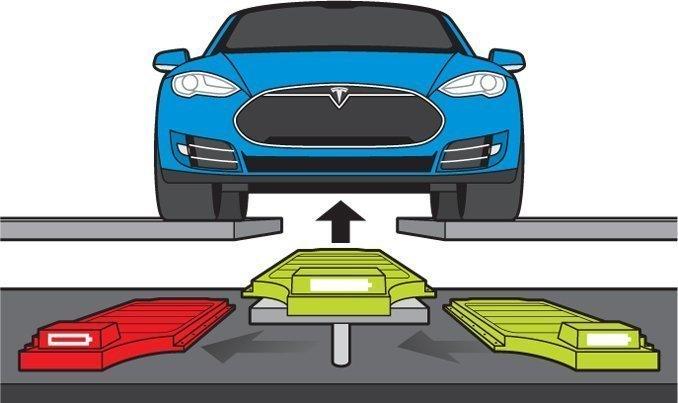
Battery Swapping is basically an exchange of the discharged batteries with the charged ones. This is considered the alternative for charging electric vehicles.
The users can go to the Battery Swapping stations and then replace the discharged battery and install a new fully charged battery into their electric vehicle. This can take place within a minutes now.
While on the other hand, for the conventional charging of electric vehicles, users have to charge it overnight in order to get a good range of miles. Battery Swapping has been successfully implemented in some parts of the world.
NIO a Battery Swapping company in china has more than 500 Battery Swapping stations in china only. And claims that it has completed 4 million successful transactions till now.
There are several other companies such as Gogoro, Yadea, Aulton, Ample, etc. that are working hard to make Battery Swapping a new normal.
Watch this video for more
A Quick look at the History of Battery-Swapping Technology
Though Battery-Swapping looks futuristic, it has a history. There are some companies who had bet on Battery-Swapping in past.
In 2007, Better Place, a company founded by Shai Agassi, was involved in Battery Swapping. But the cost of Battery-Swapping technology was four times higher than the venture expected. Due to many reasons, the company faced bankruptcy and was sold in 2013.
Tesla, a leading company in the EV market, had tried Battery Swapping in the united states, famously the company promised battery swapping in 90 seconds. This was tried on Tesla Model S.
Pack swap now operating in limited beta mode for SF to LA route. Can swap battery faster than visiting a gas station. Tesla blog out soon.
— Elon Musk (@elonmusk) December 19, 2014
But after some time musk realized that this is not the correct path, and they shifted to the superchargers.
After these unsuccessful tries, in 2022 the scene looks way forward. Battery Swapping has been implemented successfully in some parts. There are several startups holding the same niche. Do experts argue whether Battery Swapping is an option or not?
EV Companies Focusing on Battery Swapping
Here are some EV startups and giants focusing on Battery Swapping. The Tesla seems to be not involved in Battery Swapping for now. Here are some top companies which are in the Battery Swapping technologies. No surprise that most of them are Chinese. Have a look.
This table shows the top battery swapping companies, along with their headquarters and time per swap.
| Company | Region | Time per Swap |
|---|---|---|
| NIO | China | 4.6 Minutes |
| CATL | China | 60 seconds |
| Gogoro | Taiwan | 6 seconds |
| Aulton | China | 20 Seconds |
| Ample | San Francisco | 10 minutes |
| Geely | China | 60 Seconds |
| Yadea | China | – |
| KYMCO | Taiwan | 10 minutes |
- NIO
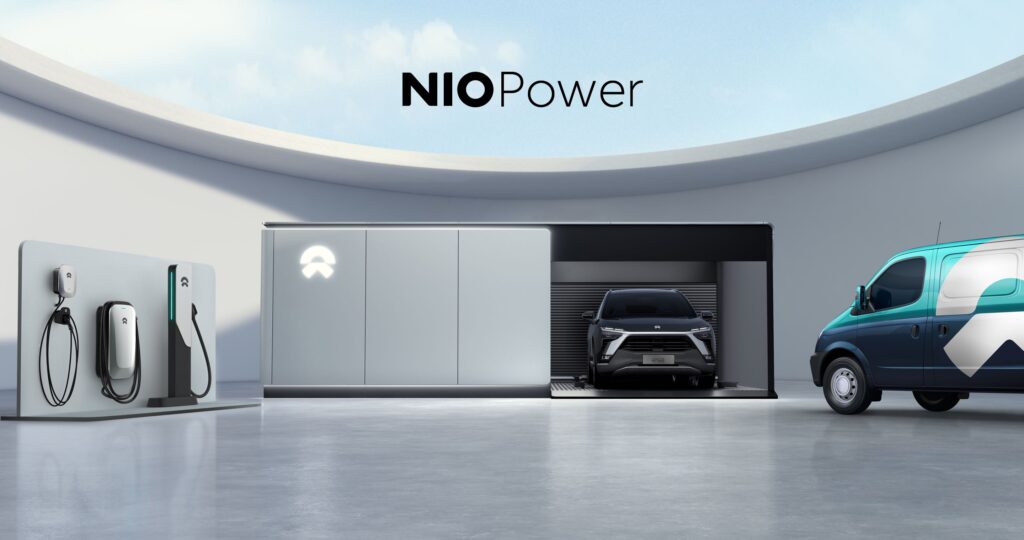
NIO needs no introduction mostly, as it is talked about much in the EV market, for its fast Battery Swapping technology. NIO is a china based company, currently operating there only. The company has more than 500 Battery-Swapping stations and has done more than 4 million swaps.
NIO is providing (Battery-As-A-Service) BAAS, partnering with the CATL. This means customers do not need to purchase the battery along with the electric vehicles.
NIO is ambitious about the battery swap technology as it launched its power swap station 2.0. NIO claims it can complete 312 battery swaps per day, which means 4.6 minutes per swap including the parking of the vehicle. The parking of the vehicle is also fully automated.
The NIO blog says, they aim to build 700 new sites across china, and have set the target to locate more than 4000 sites worldwide.
The company is looking for expansion worldwide. Chinese Govt looks to be on the side of the company in terms of the regulations and subsidies.
- CATL
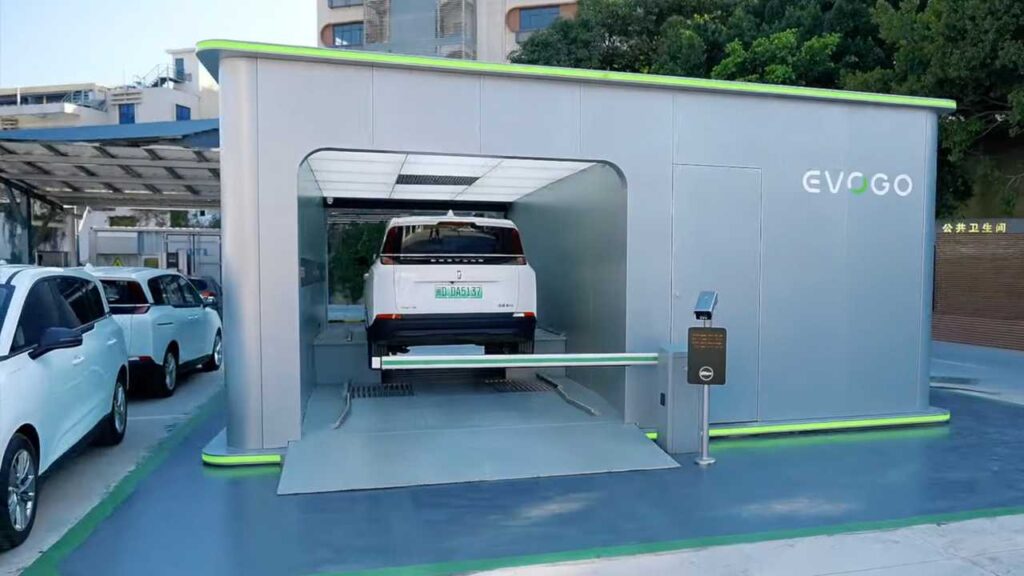
CATL, another Chinese company, has entered the Battery Swapping field. The CATL recently in Jan 2022, announced and launched its Battery-Swapping solution EVOGO. The battery pack in the EVOGO is called choco-SEB (Swapping Electric Block), writes EV Reporter.
The swapping station is around three parking places big. It can house 48 Battery Swapping blocks. Like NIO power 2.0, EVOGO is automated too. In the first place, this swap solution will be available only in selected cities.
- Gogoro

Gogoro, a company based in Taiwan is one of the world’s largest networks of Battery Swapping. The company shares the efforts for sustainable energy.
Gogoro aims to make portable power accessible to every rider out there in urban areas of the world. The Battery Swapping by Gogoro is focused on the two-wheelers. The company plans a partnership with Hero Motocorp to enter the Indian market.
- Aulton
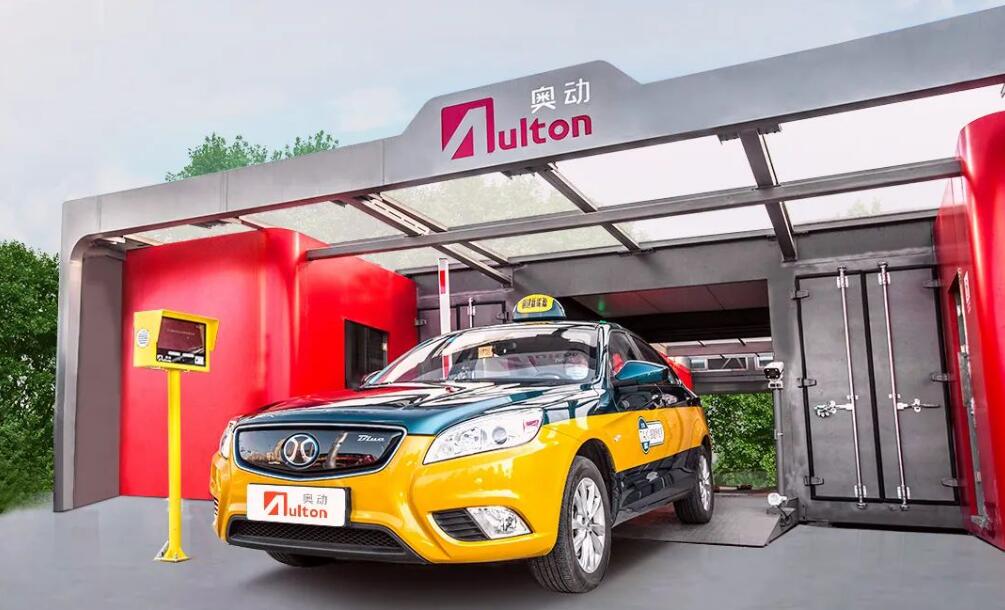
Aulton New Energy, a Chinese company based in Shanghai, has been known for its Battery Swapping efforts and technology. Aulton new energy was founded in 2016, and its battery stations are in their fourth generation. The thing is that Aulton claims that it takes only 20 seconds to change a battery at its power swap station.
Aulton will have 300 battery swap stations in 2023 in shanghai and 200 in Chongqing, writes cnevpost.
- Ample
Ample opened its first battery swap station in San Francisco, Bay Area a few years back. Ample is working with uber since 2020 on the global electrification strategy. The Uber drivers were its first customers, says CNBC. Its new future-proof modular batteries are said to be compatible with any type of vehicle.
- Geely
Geely Auto Group is also a Chinese company, which is working on battery swap technology. According to Reuters, Geely is planning to set up 5000 battery swap stations by 2025. Its Battery Swapping technology in Maple Leaf 60S is said to complete one swap in 60 seconds.
- Yadea
Yadea is also an electric two-wheeler manufacturer, spread across 80 countries. Reports say, recently Yadea partnered with Gogoro and DCJ, for the battery swap technology network across china.
- KYMCO

KYMCO is a competitor of the Gogoro for electric two-wheelers. The company recently signed deals with two motorcycle manufacturers, on swap technology for its IONEX battery, says electrek.
Pros and Cons of Battery-Swapping
Battery Swapping is considered an alternative to charging electric vehicles. Though it is a technology in existence, experts differ on the sustainability of electric vehicle Battery Swapping.
There are several advantages associated with Battery Swapping over fast charging. But on a similar track, there are disadvantages to thinking about, the question of the long-term practical approach of Battery Swapping.
Why Battery-Swapping is a Good Idea? | Pros of Battery-Swapping
The advantage of Battery-Swapping technology is the difficulties associated with the charging networks for electric cars. Here we put the pros of Battery Swapping technology for electric vehicles in three points.

- Time
On average, electric vehicles need to be charged for several hours in order to get a good miles of range. Though superchargers are the option for fast charging, they degrade the battery over time.
Internal Combustion vehicles (ICE) just take some minutes to refuel, and they give 400 miles of range on a gas station. In contrast, electric vehicles need to be charged overnight, or 15 minutes with the supercharger, and still get a range of 200 miles.
The issue is to match the speed that an ICE vehicle refueling has.
Now as the technology gets improved, Battery Swapping can be a step forward towards that. In 2022, Battery-Swapping can take place within some minutes, potentially in seconds. We get a fully charged battery within minutes.
The NIO swaps battery in 4 minutes, while Aulton claims that in 20 seconds. Battery-Swapping can save a lot of time than electric vehicle charging, which is an advantage of Battery-Swapping.
- Money
Electric vehicle batteries contribute around 30-40% of the electric vehicle’s cost. When it comes to money, Battery-Swapping can be much more affordable than charging batteries on battery charging stations.
In Battery-Swapping, Customers don’t need to pay for the battery at the time of purchase of an electric vehicle. The average cost of the battery is $12800, so electric vehicle owners can reduce the cost of the electric vehicle by $10000. While leasing a battery can cost $150 per month.
Also, the cost of the electricity will be less compared to normal electricity. All batteries can be charged at one rate, on the charging stations. As a startup, if Battery-Swapping gets standardized, it can be much more affordable and profitable.
So Battery-Swapping serves as an advantage to both the service providers as well as the users.
- Safety
The electric vehicles are talked about their lithium battery explosion. The lithium-ion battery’s capacity also gets degraded over time due to improper charging, fast charging, etc. This possibility gets reduced in the case of Battery Swapping.
At the power swap stations, the batteries are charged at ideal conditions and till their ideal capacity. Also, the electricity is used safely. The incomplete and overcharging gets completely eliminated.
Also, the batteries are stored under ideal conditions. The safety of the electric vehicle is an advantage of Battery Swapping over charging stations.
Why Battery-Swapping is not a Good Idea? | Cons of Battery Swapping
Though Battery-Swapping has an advantage over overcharging of electric vehicles. There are certain bad sides to look at. There are several negative sides to Battery-Swapping. Here are a few points that experts argue on the negative side.

- Storage
The battery packs are stored in the power swap station. They are stored in ideal condition. In Battery Swapping that’s normal. But in reality, the process should be standardized. A variety of batteries come into the power station, but their quality differs.
So storing such batteries and making them replaced with the proper vehicles is a difficult task. Inventory management is also necessary. This makes it difficult on one side. The store may be a factor in the disadvantages of Battery-Swapping technology.
- Risk
A new electric vehicle owner will replace his new battery with a battery at the power swap station that might be used previously. This doesn’t fit trustworthy. The different batteries are of different qualities. Some may be used, and old, and some may be new.
This can harm the vehicle. Every time replacement can make it more prone to damage the system, as we manipulate it every day. The batteries that will get swapped every day will be different, the vehicle will be the same.
This is a risk involved with the Battery Swapping technology. Another risk of Battery-Swapping technology is theft. Such expensive batteries are needed to be tracked and protected from theft or fraud.
- Finance
As Better Place is talking about its bankruptcy, the finance related to the electric car Battery-Swapping technology is in question. Purchasing such a large amount of batteries and storing them in one place. Additionally, there will be the cost of the ideal condition maintenance, staff training, expensive machines, site, etc.
This cumulatively makes the price of a power swap station three to four times more than a normal battery charging station. There is a risk that the users or customers will use the Battery Swapping service often or not? If users don’t use the battery swap technology often then a whole financial crisis can be caused at the startup.
The large investment and risk is the main disadvantage of Battery-Swapping technology. One way to reduce the cost is to make the Battery-Swapping technology standardized. Once it gets standardized it will be easy to set up anywhere and will save much amount. Also, partnerships with the manufacturers and giants in the EV market can make a difference.
- Compatibility
Compatibility is another issue with the Battery Swapping revival. The batteries stored at the power swap stations may be different than the vehicle’s build. The size, shape, compatibility, capacity, etc. Can differ a lot.
This makes another negative side of the compatibility of electric vehicles and electric vehicle batteries. That’s why the companies like Aulton and CATL are making use of modular batteries which are made especially for swapping and can be fitted into vehicles according to their capacity.
Here is the table of advantages and Disadvantages of Battery-Swapping technology.
| Pros of Battery-Swapping | Cons of Battery-Swapping |
|---|---|
| It saves time for the customer. | Storage and stoking the expensive batteries in advance is challenging. |
| Reduces the cost of electric vehicles by $10000 on average. | The quality and condition of the swapped battery is not known to the customer, so it’s a risk. |
| The charging of the battery is done in Ideal Conditions, Eliminates risks of quick/Overcharging. | The cost of setting up a power swap station is multiple times higher than a charging network. |
| Saves Electricity Cost | Swapped batteries may not be compatible with some electric vehicles. |
Looking at these pros and cons, it is clear that there are questions about this technology for now. But the technology looks promising and that’s what Battery Swapping technology companies are trying to promise.
But is the Battery Swapping revival actually a threat to the charging networks for electric cars? Here is what the experts say.
How does the Battery-Swapping revival threaten the electric car charging networks?
Electric vehicles have two options for survival, either get the battery charged or get the battery swapped. Both ways exist today. The more common way is to charge it. The uncommon way is to swap the battery. Battery Swapping is limited to some regions of the world.
European automakers do not look to be impressed by the idea of Battery Swapping, and that’s not the right thing, says Professor Ferdinand Dudenhoeffer, director at the Center for Automotive Research (CAR) at the University of Duisburg-Essen, Germany, in a Forbes interview.
The German Expert continues that, automakers don’t see an opportunity for Battery Swapping in Europe, but it’s not the case. Big cities like London, Paris, and Berlin can bring benefits to Battery Swapping in taxi operations. Currently, China Is Deciding the rules.
Why Battery Swapping is Considered a Threat to Electric Car Charging Networks?
As discussed earlier, there are two options for the survival of electric vehicles currently. Either Charge or Swap. Obviously, there are certain startups that claim to be having solar-powered cars, but the basic principle remains the charging only.

Currently, there are several charging networks worldwide for electric vehicles. The Battery Swapping stations are less as compared to that.
In recent years the popularity of Battery Swapping is increased, and its expansion too. There are several deals the Battery Swapping service providers, to expand worldwide, and it’s not a surprise that most of them are Chinese.
NIO and Geely, Aulton, and Sinopec, a state-owned oil company have planned to establish 24,000 swapping stations across the country by 2025, as compared with current stations, which are 1,400 now.
NIO has completed more than 4 million swaps, and other Battery Swapping companies also have completed millions of battery swaps, showing that it is becoming a new normal. Also, the battery swap time reduction is a great advantage on its side.
So the increasing popularity, entry of the giants into the field, deals and agreements, successful trials, cost efficiency, and customer satisfaction are all things cumulatively making Battery Swapping more and more normal.
While on the other hand, charging stations are still running. People are still charging their electric vehicles at home. But once Battery Swapping becomes normal, will charging stations lose their popularity?
What will customers prefer, Battery Swapping or Charging Networks? The expansion of Power swap stations can be a threat to the Charging Networks, as they can replace the charging networks.
The Battery Swapping Technology is Reviving and these are the reasons they can be a threat to the Charging Networks for Electric vehicles.
Can Battery Swapping Technology Replace the Charging Networks For Electric Vehicles Completely?
“We believe Battery Swapping can be complementary to charging, especially in the short term, but it’s not going to threaten the dominant position of technologies such as fast charging. For example, Tesla started a Battery Swapping service in 2014 but exited the market as they developed the Supercharger network,” Said Pedro Palandrani, research director at Global X ETF in a Forbes report.
The statement can be summarized as Battery Swapping can be complementary to the charging, but will not threaten the charging networks.
There are several pros and cons of the Battery Swapping technology. The fast chargers also do have pros and cons. While Battery Swapping service providers are focusing on expansion and making Battery Swapping more and more common, the charging networks are already established significantly worldwide.
The fast charging networks won’t settle on the same technology, they will also improve it. Also, the battery manufacturers will try to make the batteries more and more smaller and compatible. Lots of stuff is to be done.
As palandrani said, there is room for both. Both technologies can co-exist, but will one surpass the other? That depends on how the EV market goes with time.
There is a lack of government funds for Battery Swapping in Europe and North America, while the focus is more on Charging Networks, Unlike in china. He Continued.
Conclusion:
Overall it can be concluded that efforts are being done in the Battery Swapping revival. Battery Swapping technology is becoming faster and more common. The players in the Battery Swapping segment are taking big steps toward expansion. While charging networks are still there in the market.
The West automakers don’t seem to be interested in Battery Swapping rather they are focusing on developing EV vehicles and charging networks. The Experts consider Battery Swapping as a good alternative if some of its cons are neglected.
Experts conclude that there is room for both Battery Swapping and charging networks in the market. The Battery Swapping revival is good in the short term, it is not a threat to the electric vehicle charging network.
FAQs
Is Battery Swapping a Threat to Fast Charging?
Though Battery Swapping revival is good in the short term, it is not a threat to the electric vehicle charging network, says an expert in the Forbes report.
Could ‘Better Place’ Lead to Battery Swapping?
A better place couldn’t lead to Battery Swapping. This Israel-based company faced bankruptcy and thus was sold in 2013. The main reason for that was said to be the mishandling of the company, investing money in expansion, etc. The actual required money in the business was a lot more than the founders expected.
What are the Biggest Challenges to Electric Car Swapping?
There are four biggest challenges to electric car Battery Swapping, these are storage, risk, finance, and compatibility. The difficulty in the storage of the batteries, the risk of Battery Swapping to electric vehicles, the investment needed is large, and the compatibility of the batteries with the different types of vehicles.
Are European Automakers Afraid of Battery Swaps?
European Automakers don’t seem to be interested in the idea of Battery Swapping. The automakers are focusing more on the electric vehicle battery charging networks.
Related Posts to Battery
- Does Polyjoule Battery have Fire Resistant for Electric Car Under Hot Weather?-A complete guide 2024
- Tesla Range Mode Explained
- Tesla Dead Battery Opens Door From Outside – 2024 Safe Guide
- Tesla Model 3 Range Increase in 2024
- Energy Saving Mode Tesla-A Complete guide 2024
- Are Tesla’s Battery Powered?
- Why are Electric Car Batteries Measured in Kilowatt-hours (kWH) and Not Ampere-hours (Ah)?-A Complete guide 2024
- Electric Cars Eventually Have More Range 2024
- What Is The Minimum Range Of Electric Cars?
- why does tesla not add more batteries to increase its electric car range?
- Cheapest Tesla 2024 and Cost
- Are Electric Cars Really Saving Money at The End of the Day?-An Ultimate guide 2024
- Tesla Range Miles (Model X, Model S, Model Y, Model 3)-Ultimate And Complete Guide-2024
